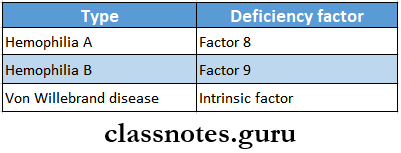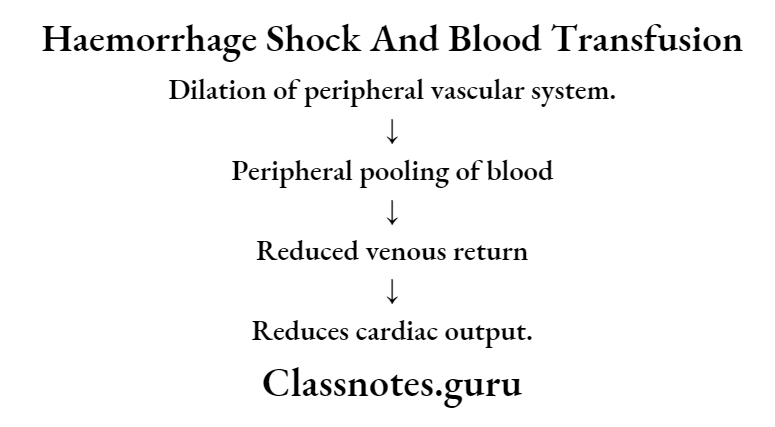Haemorrhage Shock And Blood Transfusion Important Notes
- Classification Of Haemorrhage
- Based on the nature of the vessel involved
- Arterial
- Venous
- Capillary
- Based on the timing of the haemorrhage
- Primary
- Reactionary
- Secondary
- Based on the duration of the haemorrhage
- Acute
- Chronic
- Based on the source of the haemorrhage
- External
- Internal
- Based on the nature of the vessel involved
- Methods Of Measuring Blood Loss
- Weighing swab
- Measurement of swelling in a closed fracture
- Measuring a blood clot
- Methods To Stop Bleeding
- Rest
- Pressure and packing
- Ligation of vessels
- Hemophilia

- Shock
- Definition
- Shock is a condition in which circulation fails to meet the nutritional needs of the cells and fails to remove the metabolic waste products
- Classification
- Haematogenic or hypovoJaernic shock
- Traumatic shock
- Neurogenic shock
- Cardiogenic shock
- Septic shock
- Miscellaneous
- Anaphylactic shock
- Definition
- Blood Transfusion
- Indications
- Acute haemorrhage
- Major surgery
- Deep burns
- Pre-operative and post-operative in anaemia
- In malnutrition
- In coagulation disorders
- In erythroblastosis details
- During chemotherapy in malignant diseases
- Complications
- Transfusion reactions
- Incompatibility
- Pyrexia reactions
- Allergic reactions
- Transmission of diseases
- Reactions caused by massive transfusion
- Acid-base imbalance
- Hyperkalaemia
- Citrate toxicity
- Hypothermia
- Failure of coagulation
- Complications of over-transfusion
- Congestive cardiac failure
- Other complications
- Thrombophlebitis
- Air embolism
- Transfusion reactions
- Indications
- Blood Products
- Plasma and its derivatives
- Fresh frozen plasma
- Platelet-rich plasma
- Fibrinogen
- Albumin
- Cryoprecipitate
- Synthetic solution
- Dextran
- Gelatin
- Hydroxyethyl starch
- Fluorocarbons
- Plasma and its derivatives
Haemorrhage shock and blood transfusion notes
Haemorrhage Shock And Blood Transfusion Short Essays
Question 1. Vasovagal shock.
Answer:
Vasovagal Shock
- Vasovagal shock is a type of neurogenic shock.
Read And Learn More: General Surgery Question and Answers
Pathophysiology:

Vasovagal Shock Clinical features:
- Reduced blood flow to the brain.
- Cerebral hypoxia.
- Bradycardia.
- Hypotension
- Unconsciousness
- Pallor
Vasovagal Shock Treatment:
- Place the patient flat or in head low position.
- Maintain airway
- Use of 4 atropine.
Notes on haemorrhage and its classification
Question 2. Reactionary bleeding.
Answer:
Reactionary Bleeding
Reactionary bleeding is defined as bleeding that occurs within 24 hours of injury or operation.
Reactionary Bleeding Causes:
- Dislodgement of a blood clot.
- Slipping of ligatures.
Reactionary Bleeding Precipitating Factors:
- Rise in blood pressure
- Restlessness.
- Coughing
- Vomiting
- A rise in venous pressure.
Question 3. Haemophilia.
Answer:
Haemophilia
- Haemophilia is a sex-linked inherited disorder.
- Haemophilia is carried by a recessive gene.
- Transmitted through female carriers.
Haemophilia Cause:
- Lack of factor 8, a coagulation factor.
Haemophilia Clinical features:
- Bleeding after mild trauma.
- Repeated haemorrhages into joints.
- Spontaneous retroperitoneal bleeding.
- Severe abdominal pain and tenderness.
- Haematuria.
- Permanent damage to the articular cartilages and articular surfaces.
- Disorganisation of the joints.
Haemophilia Treatment:
- Periodic infusion of cryoprecipitate.
- Transfusion of fresh blood or fresh frozen plasma.
Shock types and management notes
Haemorrhage Shock And Blood Transfusion Viva Voce
- Albumin is not used in chronic renal disease, chronic liver disease and to treat malnutrition
- Cryoprecipitate is a rich source of factor 8
- Fluorocarbon is considered to be a red cell substitute
- Blood is stored in blood banks at 4°C
- Cold citrate-containing blood changes storage
- Blood is separated into individual components to optimize therapeutic potency
- Styptics are local hemostatic agents used to stop bleeding from the local approaching site
- Hypotension manifests when blood loss exceeds 30%
